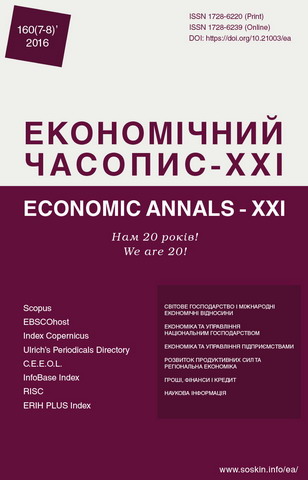Categorization of corporate taxation in the European Union countries using cluster analysis: a comparative study
Categorization of corporate taxation in the European Union countries using cluster analysis: a comparative study
Author(s): Lucia Mihokova, Alena Andrejovská, Slavomíra MartinkováSubject(s): Economy
Published by: Institute of Society Transformation
Keywords: European Union; Tax System; Tax Harmonization; Tax Convergence; Corporate Tax; Categorization; Cluster Analysis
Summary/Abstract: The corporate tax burden is in the spotlight of entrepreneurs, investors, politicians, lawyers, economists, research scholars and analysts, because corporate tax encompasses variety of economic, political and social aspects. The presented research focuses on identification, analysis and assessment of current state of corporate taxation in countries across Europe. Its main purpose is to elaborate an economically meaningful categorization of the EU countries based on the level of corporate taxes, tax competition and tax policy convergence. Authors used two clustering methods to differentiate the groups of countries within the European Union. We decided to organize the EU countries states into five clusters. Although the number of clusters was selected solely based on our decision and the results of testing in R-program, identical results by both Ward’s hierarchical method and non-hierarchical k-means method grounded our choice of the EU member states grouping into five clusters. According to categorization results for 2013, both non-hierarchical k-means method and hierarchical Ward’s method grouped the EU countries in identical clusters. However, results for 2015 for Malta and the United Kingdom came differently by Ward’s method and k-means method. We assume these shift may be caused by significant changes in segmentation criteria between analysed years or by some processes in the methodology of the methods used. The countries remaining in the first cluster either in 2013 and 2015 (namely, Italy, Belgium and France) have large macroeconomic issues and instability in public finances. A low fiscal discipline was reflected in the indicator deficit, as well as in the average value of public debt. All countries in the first cluster have a similar corporate taxation system and with their high level of corporate taxation can be considered as the least competitive in both years researched. Results confirmed tax competition between countries within the European Union. Cluster analysis proved that the level of convergence in the European Union countries’ tax systems is not sufficient. A certain level of convergence of corporate tax system is shown, but we conclude that it rather exists in two separate groups of the member states (the old and the new EU member countries) separately. Therefore, there is still much space for tax harmonization measures implementation.
Journal: Економічний часопис - ХХІ
- Issue Year: 160/2016
- Issue No: 07+08
- Page Range: 4-8
- Page Count: 5
- Language: English

